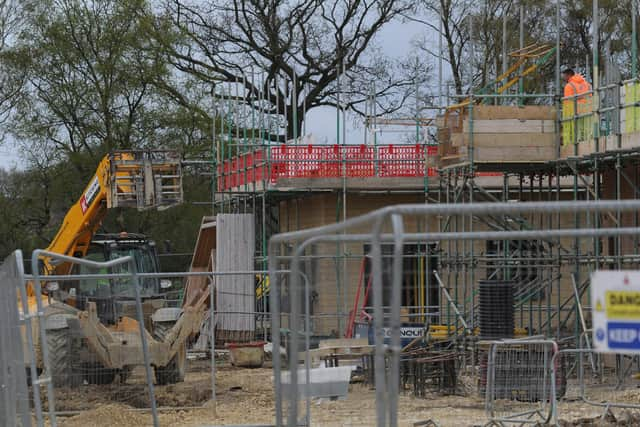Most of us are NIMBYs at heart so how do we build enough homes in this country? - Ritchie Clapson
The reason we’ve had a housing crisis for as long as most people can remember is because it seems impossible to solve without upsetting people. Most politicians are upset-people averse, so little gets achieved. They don’t ignore the problem completely—they have plenty to say about the subject—but they don't actually change anything in a meaningful way because that would be sure to upset a section of the voting public.
Add to this that it is the nature of the Opposition to find fault and when the next general election is never more than five years away, it requires a rarely seen boldness to push ahead with policies perceived to be unpopular.
Advertisement
Hide AdAdvertisement
Hide AdLet’s consider the scale of the problem. Both main political parties have been talking about the need to build 300,000 new homes each year. If that sounds like a lot, it is. The total number of homes in Oxfordshire is 275,000, and building a small county’s worth of homes each year is no small task. And it’s not just the actual construction that we need to consider as these homes need to be where people want to live and they need to have appropriate facilities and connections.


The New Towns Act 1946 reflected the need for post-war reconstruction but also acknowledged that simply adding to London’s sprawl wasn’t the answer. Instead, we saw a total of 27 new towns emerge, including the likes of Stevenage, Crawley, Bracknell, Hemel Hempstead, Peterlee, and Runcorn. Milton Keynes was one of the later creations and went on to become the largest with some 117,000 households today.
England’s biggest new town since Milton Keynes is Northstowe, near Cambridge. Here around 1,200 homes have been built out of a planned 10,000, although some six years after the first house was built, it still has no shop, pub, doctor’s surgery, or café. It does have a post box.
Despite its growing pains, Northstowe serves to underline the scale of the challenge. The village/town is on a 20-year journey to reach its 10,000th home, yet we need the equivalent of 30 Northstowes to be built every year if we’re to meet the housing target. And that’s no mean feat, even if you had lots of places to put them all; places where nobody minds you building a new town.
Advertisement
Hide AdAdvertisement
Hide AdThe simple truth is that everyone would quite like the housing crisis to be solved, but few are happy to have new houses built near them. We may like to think differently, but most of us are NIMBYs at heart.
At some point between now and January 28, 2025, we will be asked to go to our polling stations. And in that time, we will hear a lot of talking from all parties about housing. But will we hear anything different?
When you need to make difficult decisions, particularly when you risk alienating some of the voting population, then party politics usually gets in the way.
In my view, there is a relatively simple solution. Take housing out of the political agenda and establish a cross-party group that will be responsible for recommending a solution and then implementing it.
Ritchie Clapson is co-founder of property development training firm propertyCEO.
Comment Guidelines
National World encourages reader discussion on our stories. User feedback, insights and back-and-forth exchanges add a rich layer of context to reporting. Please review our Community Guidelines before commenting.